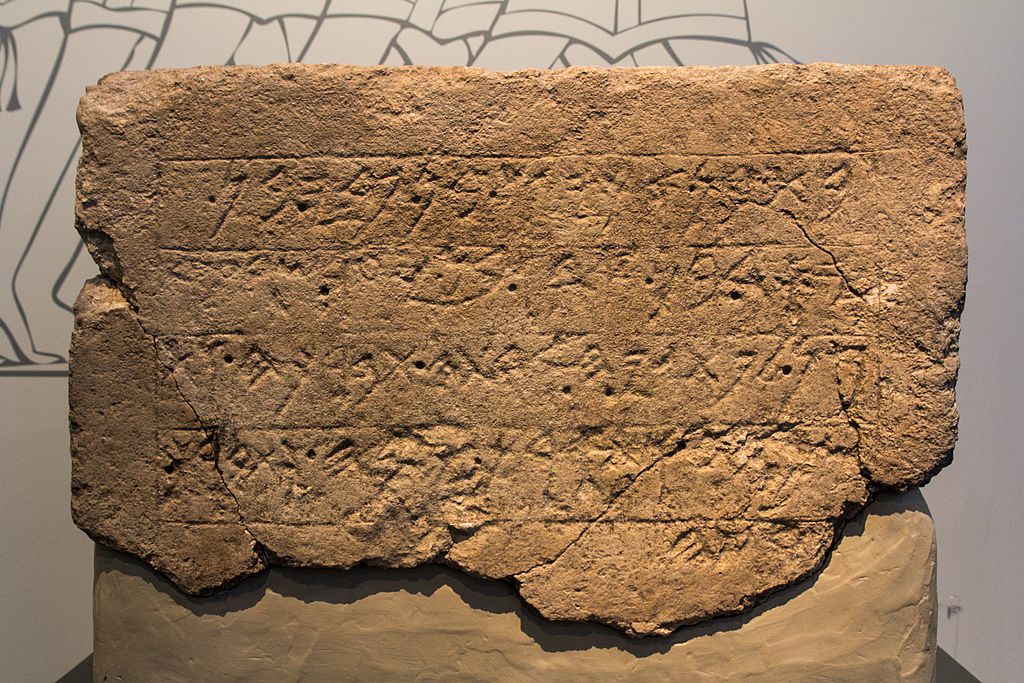The Ekron Inscription is an inscription from the first quarter of the 7th century BC, it is a royal inscription in a temple in the city of Ekron, dedicated to the goddess Phatgia and reminiscent of the Philistine dynasty of Ekron, which at that time was a patron kingdom of the Assyrian Empire . The inscription, which was discovered on the floor of the ceremonial area in the temple, is engraved on a limestone measuring 38 x 61 cm and weighing 105 kg. The language of the inscription is in the Philistine dialect of the Phoenician script .


The inscription is considered one of the most important findings in principle. This is the first text identified as “Philistine” identified in the study. Over the years, there have been disagreements in the archaeological research regarding the location of the Philistine Ekron, some identified Ekron at Tel Katara near Gedera or with Tel Batsh, the American biblical scholar Edward Robinson identified Ekron near the Arab village of Akir (and therefore the settlement from Mezekare Batia, was called in the early days “Ekron “). In the 19th century, Eretz Yisrael researcher Yehossef Schwartz claimed that Ekron and Caesarea were the same city. When excavations began in the 1980s at Tel Mekna, the site’s diggers proposed to identify it with Ekron. This identification remained a disputed change until the inscription was found, which mentions “Sher Ekron” and thus the research discussion was concluded and it was determined that Tel Makna is indeed Ekron from the biblical and Assyrian sources.
The inscription mentions five of the dynasty of Ekron kings in order: Achish, Pedi, Yasad, Ada and Yaar. Kings Achish and Pedi are also mentioned as kings of principle in Assyrian royal inscriptions, when Pedi is mentioned in Sennacherib’s sawmill describing his military campaign to suppress the rebellion in Israel in 701 BC. The name “Achish” appears in the book of Samuel 1 as the name of the king of Gath. This is the only time that the name of a king appears I invaded in the Bible.
There is great interest in the names of the kings to discuss the origin of the Philistines. The names Pedi, Yasad, Ada and Yaar are heavenly names, but the name Akish has an ancient Greek linguistic basis. This claim is a reinforcement of the theory in the research, according to which the origin of the Philistines is from Crete or the Greek cities in the Aegean region.
Another possible connection was suggested by the name of the goddess in whose honor the inscription was dedicated and probably also the temple. The inscription is dedicated to the goddess called “Patgia Adonito”, a Philistine goddess that was not known to archaeological and historical research until the discovery of the inscription. There are many theories regarding the cultural origin of Phatgia, and some suggest that it originated in Greek culture. One explanation is the similarity between “Pathegia” and “Gaia”, and some researchers have suggested reading the name of the goddess as “Pathenia”, thus identifying her name with a familiar adjective for a number of ancient Minoan and Mycenaean deities.

